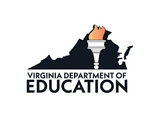
Project including references, steps, and explaination.
- Subject:
- Visual Art
- Material Type:
- Lesson Plan
- Visual Media
- Author:
- Tia Duncan-Stuart
- Date Added:
- 02/13/2020

Project including references, steps, and explaination.

Students will design ceramic forms based on specific Elements of Art and Principles of Design presented. The students may print out the handout and use colored pencils to create their design, they can create them digitally or they can use this handout as a guide to recreate ceramic forms in their sketchbooks.

Students will experiment with various light blocking materials and how they affect creation of shadows. Using this knowledge, student will participate in a series of activities manipulating and capturing shadows to inform their own work creating a 3D sculpture that casts a unique shadow.

Students will research and plan for creating art while learning to visualize landscapes three-dimensionally. Students will explore and experiment with three-dimensional paper techniques and depict elements in foreground, middle ground and background.

Students will learn about installation art and artists such as Sandy Skoglund to inspire the creation of their own small-scale installation. Students will create designs based on their chosen concept and understanding of installation art in creating a small installation for their bookshelf (book nook).

Introduction and examples in order to create organic forms using reed and tissue paper.

Students will learn about basic shapes in Monet's painting "Wheatstacks, Snow Effect, Morning". They then learn about light and shadows through reading and experimenting with three-dimensional models and flashlights. Students will also learn about time of day and the seasons.